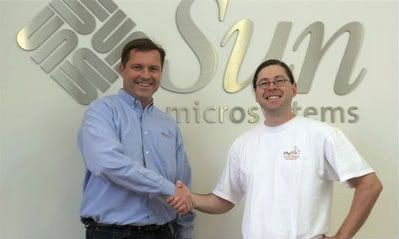









Gmail Redesigned, the dark-skinned theme that's part of the popular Google Redesigned Extension, has been released in a 3.0 version that adds more message space, reduces in size by half, and supports newer Gmail features.
Gmail Redesigned 3.0 isn't a major, uh, redesign of the all-encompassing skin, but it does try to address issues and irks that users have emailed and posted to Globex Designs. Chief among them is reducing the amount of vertical space taken up at the top by the logos, out-links, and other elements. There's also support for the newer pages orbiting Gmail, like the stand-alone Google Contacts, and full support for the "Older" (/faster) Gmail version. In addition, the design team states that they reduced the size of the pre-loading elements by around 50 percent, hopefully speeding up load times for users. Web designers, take note:
How are we able to make sure drastic reductions in size while adding so many new features? The biggest factor was the unification of many of the interface elements and further improvements of our compression algorithms. If you're interested in finding out more about our CSS compression, keep an eye out on our website as we will be releasing a brand new product called - CSS Compressor.
Enough code talk—let's take a look. The top picture on this post is the basic inbox view; here's how things look in a Compose window:

And look to the right for a compilation of sidebar widgets and a chat window with Gmail Redesigned 3.0.
 Gmail Redesigned 3.0 will automatically update itself if you're using the Google Redesigned extension. Hit the link for details on the download, as well as the individual Gmail, Google Calendar, and Google Reader styles.
Gmail Redesigned 3.0 will automatically update itself if you're using the Google Redesigned extension. Hit the link for details on the download, as well as the individual Gmail, Google Calendar, and Google Reader styles.

 On April 20, 2009, Oracle announced it has entered into an agreement to acquire Sun Microsystems (Sun). The proposed transaction is subject to Sun stockholder approval, certain regulatory approvals and customary closing conditions. Until the deal closes, each company will continue to operate independently, and it is business as usual.
On April 20, 2009, Oracle announced it has entered into an agreement to acquire Sun Microsystems (Sun). The proposed transaction is subject to Sun stockholder approval, certain regulatory approvals and customary closing conditions. Until the deal closes, each company will continue to operate independently, and it is business as usual. One of the biggest High Definition Technology companies Panasonic Corporation has announced a professional 3D Full HD Production system. This device claims the first in the industry, consists of a twin-lens P2 professional camera recorder and a 3D Compatible High definition display.Panasonic has decided to exhibit the concept of 3D system at its booth on NAB 2009, which is going to be held in Las Vegas today. This interesting 3D camera from Panasonic based on the actual and suiting P2 HPX170.
One of the biggest High Definition Technology companies Panasonic Corporation has announced a professional 3D Full HD Production system. This device claims the first in the industry, consists of a twin-lens P2 professional camera recorder and a 3D Compatible High definition display.Panasonic has decided to exhibit the concept of 3D system at its booth on NAB 2009, which is going to be held in Las Vegas today. This interesting 3D camera from Panasonic based on the actual and suiting P2 HPX170. researchers at the Hack In The Box conference are claiming they found a way to gain access to any Windows 7 computer undetected. Their weapon of choice is a 3kb app named VBootkit 2.0.
researchers at the Hack In The Box conference are claiming they found a way to gain access to any Windows 7 computer undetected. Their weapon of choice is a 3kb app named VBootkit 2.0.
 Within just 9 months, Apple has just reached 1 billion App Store downloads. It is phenomenal and results have shown, the iPhone and App Store have played an enormous role in Apple and AT&T’s recent earnings. iPod and iPhone sales have totaled 37 million units so far and their recent 2nd quarter earnings are the best in Apple history; $8.16B revenue, $1.33 profit per share.
Within just 9 months, Apple has just reached 1 billion App Store downloads. It is phenomenal and results have shown, the iPhone and App Store have played an enormous role in Apple and AT&T’s recent earnings. iPod and iPhone sales have totaled 37 million units so far and their recent 2nd quarter earnings are the best in Apple history; $8.16B revenue, $1.33 profit per share.


 Google is tight-lipped about its computing operations, but the company for the first time on Wednesday revealed the hardware at the core of its Internet might at a conference here about the increasingly prominent issue of data center efficiency.
Google is tight-lipped about its computing operations, but the company for the first time on Wednesday revealed the hardware at the core of its Internet might at a conference here about the increasingly prominent issue of data center efficiency.